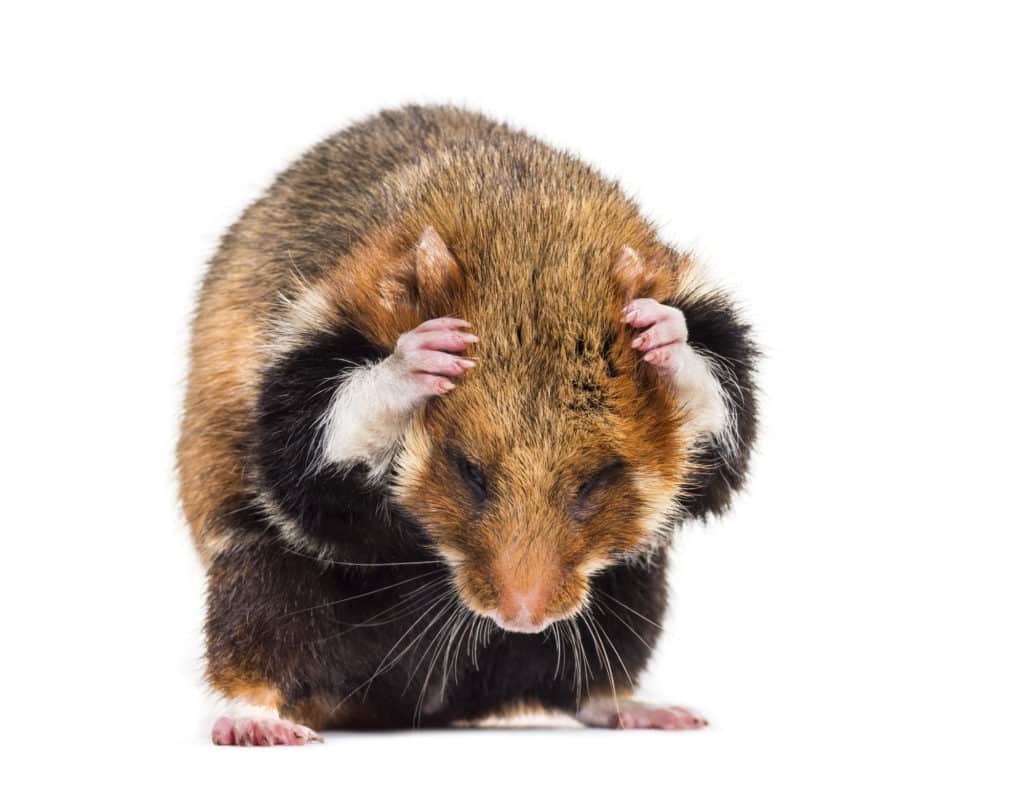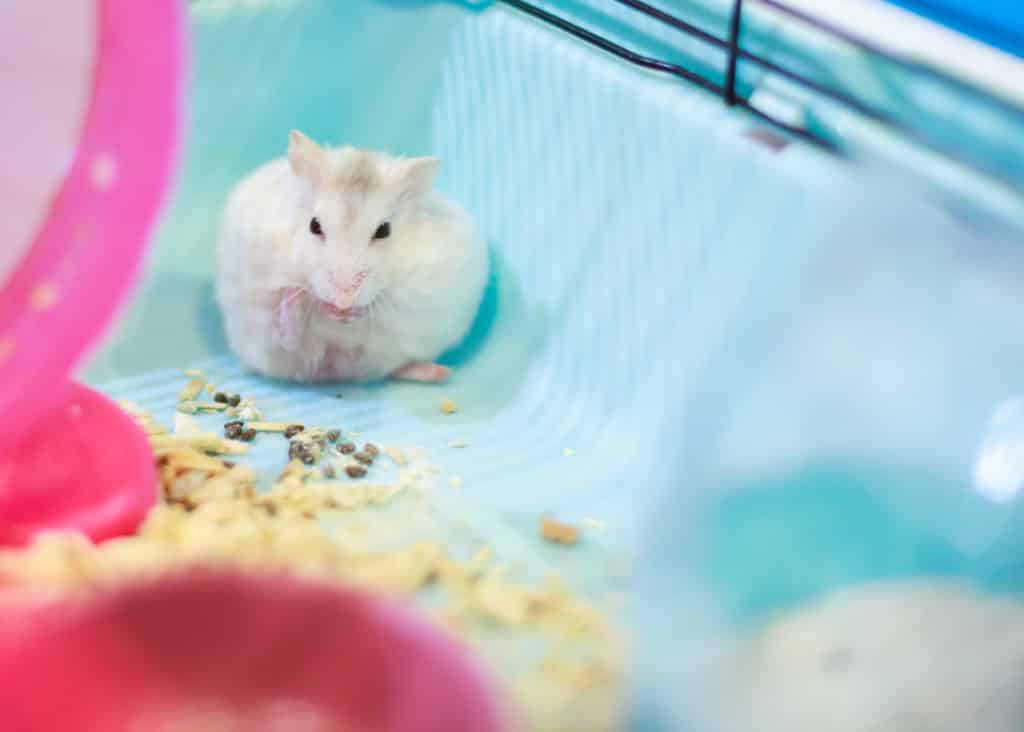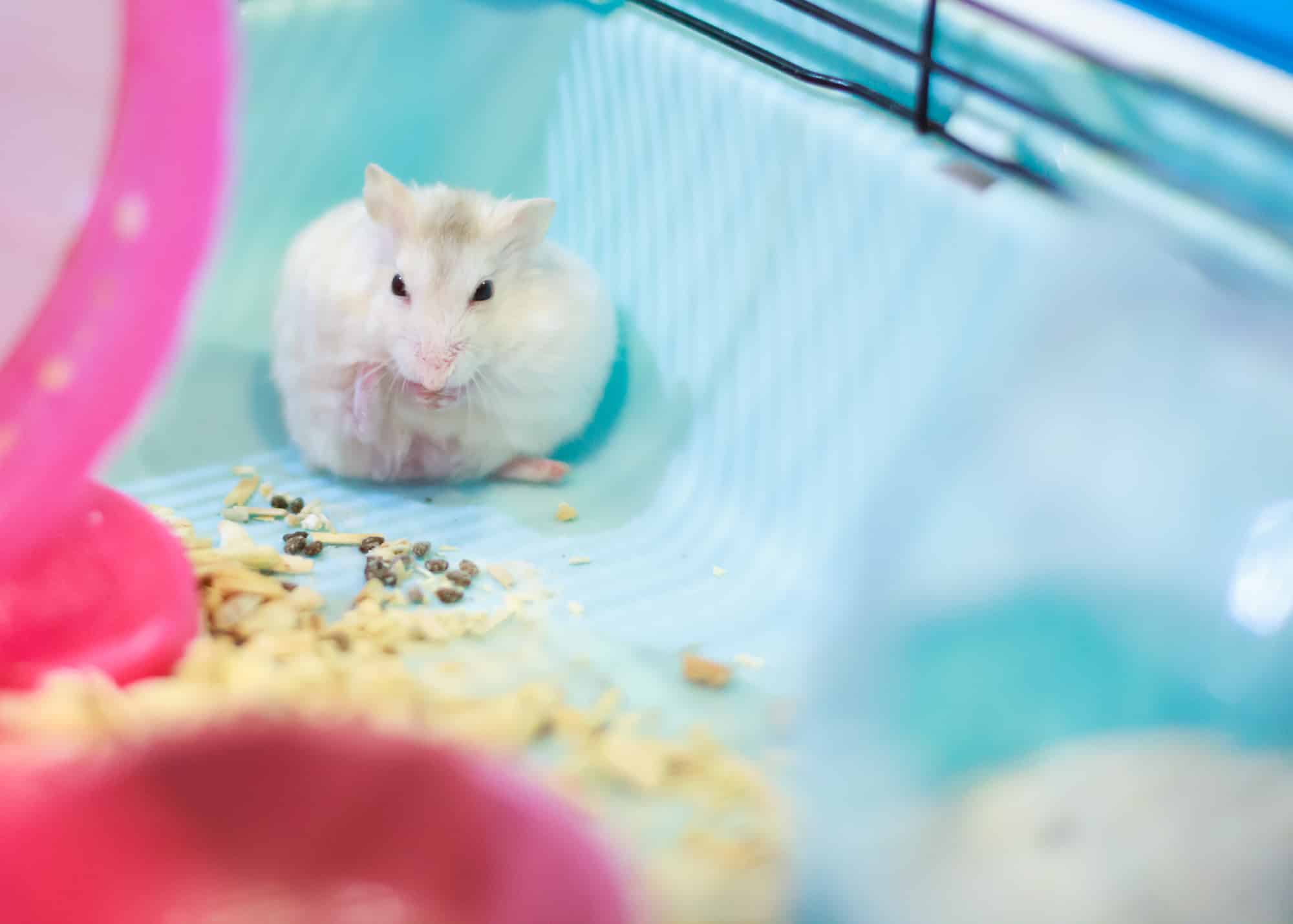Most animals that roam outside can get fleas. But hamsters don’t go outside. They stay at home all the time. So, can hamsters get fleas?
Read this blog post to find out if hamsters can get fleas, how to treat fleas and mites in hamsters, and how to prevent them.
What should you know about fleas?
Fleas are tiny, wingless, parasitic insects that feed on the blood of animals. Female fleas can consume up to 15 times their body weight of blood every single day. After drinking this blood, they excrete partially digested blood (also known as flea dirt) which acts as food for flea larvae (Source: Comfortis).
Even though fleas don’t have wings, they can jump up to 150 times their own height, i.e., up to a height of 8 inches vertically. So, they can jump from the ground or grass and latch onto a host (a pet like a dog or a cat) easily. Then, they jump from that host to another (even a human being) whenever they get a chance to do so.
A single flea can live on the body of your pet for about 2 months. During this time, a female flea lays around 40 to 50 eggs a day. So, in her lifetime, a single flea lays up to 2000 eggs (Source: My Pet).
Fleas can be deadly for pets. The effects vary from allergic reactions to anemia.
Fleas can also be the carriers of diseases, some of which can be deadly for humans as well. After all, the Black Plague, which wiped out 30% to 60% of Europe’s population in the fourteenth century, spread when the fleas that bit the infected rodents bit humans. So, fleas can be dangerous not only for your pets but also for you and your children.

Can hamsters get fleas?
Hamsters are animals that stay indoors inside the cage most of the time. The only time they come out of the cage is when you take them out to play with them or when you take them to a vet. So, fleas are very rare in hamsters.
But that doesn’t mean hamsters can never get fleas. Hamsters, too, can get fleas.

How do hamsters get fleas?
Hamsters get fleas from other pets like cats and dogs and even from humans.
Dogs and cats play outside. So they can get fleas. If they then come near your hamster, the fleas on their bodies can jump onto your hamster and infect him.
If you wear warm, fluffy clothing when you go out, fleas can also jump and latch onto your clothing, mistaking it for fur. Then, when you go near your hamster, they can hop onto your hamster and reproduce there, creating thousands of fleas within months.
What can fleas do to your hamster?
As explained above, fleas can carry several diseases. The Black Plague is just one example of many such diseases. And some of these diseases can be deadlier for hamsters when compared to human beings because of their small size.
Even if a flea doesn’t carry any diseases, it can quickly multiply and produce thousands of fleas within months. And when all these little blood suckers (literally) suck the blood out of your small pet, he can quickly become anemic. Now that you know what fleas can do to your hamster let’s find out how to determine if your hamster is infected by fleas.
How to find out if your hamster has a flea infestation?
Symptoms
If you observe any of the symptoms below, your hamster might have a flea infestation.
- Scratching – If your hamster has fleas, he might scratch his body either by himself or against the bars of the cage.
- Loss of hair – If your hamster scratches his body against the bars of the cage, he will lose hair, and hence, bald patches might appear on his fur.
- Blisters – Blisters or tiny swollen spots might appear on his skin.
- Symptoms of anemia – The fleas on your hamster’s body drink his blood. So, he would become anemic if the flea infestation is left unchecked for a few weeks. If that happens, he would often appear fatigued, lethargic, and lose his appetite.
If you observe any of the above symptoms, your hamster might have a flea infestation. But to make sure that your hamster has a flea infestation, you can do the following checks.
How to make sure that your hamster has a flea infestation
- If your hamster has fleas, these little pests will be visible to the naked eye. If you part your hamster’s fur, or if you observe the bald patches on your hamster’s skin carefully, you can observe tiny moving dots, which are actually the fleas trying to run away.
- Fleas leave their droppings everywhere – on your hamster’s fur, bedding, and cage. So, if you observe your hamster’s fur and his surroundings carefully, you should be able to notice these droppings as small black dots. But to make sure that these are indeed flea droppings, you can take a comb and pull it along the length of your hamster’s body. Now some of these droppings would have stuck to the comb. Then, take a small piece of cloth and wipe the comb until the droppings are transferred to the piece of cloth. Do you remember how we discussed before that fleas can leave their droppings for their larvae to feed on, and these droppings are actually partly digested blood? So, if your hamster has a flea infestation, the black droppings should turn red once you add water to the piece of cloth.
Now, let’s assume that you have done the above experiments and have made sure that your hamster has a flea infestation. How do you treat it?
How to treat hamster flea infestation?
The best way to treat hamster flea infestation is to use a hamster mite/flea spray. These can kill fleas and eggs without being harmful to your hamster. However, you should not spray too much on your little pet. Moreover, the type of spray can also differ based on the size of the hamster, i.e., you may not be able to use the same spray for a Syrian hamster and a dwarf hamster. In addition to that, some of these sprays can be harmful to your hamster and your children. So, choosing the right type of spray is important. Therefore, it is advisable to consult a vet first once you determine that your hamster has a mite infestation.
The next step to do is to completely remove the bedding, wooden toys, sawdust, etc., from the cage, put them into a bag, and throw it away. Then disinfect the cage and add new bedding, toys, etc., for your hamster (Source: My Pet Needs That).
How to prevent hamster flea infestation?
The best way to prevent fleas from infecting your hamster is to prevent other pets from getting too close to your hamster. If your other pets have flea problems, get them treated for fleas as soon as possible.
Keep your hamster’s surroundings clean. Fleas and mites can stay and breed in the bedding. So, every day, when you spot clean your hamster’s cage, check carefully for black flea droppings. If you notice these, then change the complete bedding immediately, replace the toys, and disinfect the cage. Also, get your hamster treated for fleas immediately.
Very rarely, some new bedding may already contain parasites. So, before you open the newly purchased bedding and put it into your hamster’s cage, check the bedding properly. If you think that there are parasites inside it, then throw it away immediately (Source: Hamsters 101).
Carry regular health checkups every week. Does your hamster often scratch itself? Does he have bald patches on his fur? Part his fur and see if there are any fleas or flea droppings. Take a comb, pull it through his fur and see if you find any flea droppings.
FAQ
Can fleas kill a hamster?
Fleas are not particularly dangerous for your hamster if present in small numbers.
But when left untreated, they can multiply quickly and drain a lot of blood from your pet, making him anemic. If left untreated for a long time, it can lead to the death of your hamster.
A flea infestation can also stress your hamster out. As stress is the leading cause of Wet Tail, a flea infestation can also cause Wet Tail, which can kill your hamster within a few days.
Fleas can also play host to several harmful pathogens that can cause other diseases which can significantly affect your hamster’s lifestyle.
So, if your hamster has a flea infestation, you should immediately consult a vet.
Can hamster fleas/mites spread to humans?
Most of the fleas that infect hamsters do not spread to humans and other animals. However, a rare type of flea can spread to humans from hamsters (Source: Squeaks and Nibbles).
So whenever you handle an infected hamster, you must be cautious. Wash your hands properly after handling your pet. Consult a vet immediately to find out if your hamster’s fleas can spread to you or your children.



